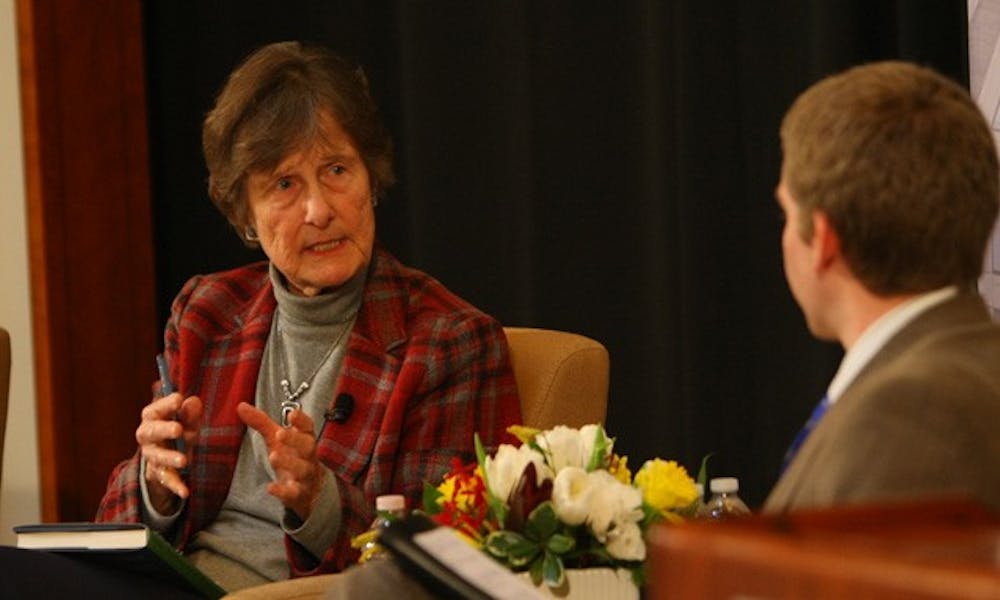Duke’s first and only female president returned to campus to share what she has learned from her study and practice of leadership.
Nannerl Keohane, former Duke president, gave her perspective on what makes a good leader Friday at the Sanford School of Public Policy, centered on her new book, “Thinking About Leadership.” The discussion, led by Kristin Goss, assistant professor of public policy and political science, and senior Mike Lefevre, Duke Student Government president, focused on leaders of many different types and characteristics they share.
“There are leaders in all sorts of situation,” Keohane said. “Why do we use this same term to describe the head of garden club as the president of the U.S.? Leaders don’t all have high-powered, omnifarious jobs.”
Keohane said she decided to write a book about leadership in 1980 when she accepted the post as president of Wellesley College, her alma mater.
In discussing her work, Keohane described three elements to gauge the effectiveness of a leader are their traits, experience and luck. She added, however, that the most important leadership quality is good judgment.
Judgment is a trait one is born with, Keohane said, sharing a personal anecdote about how she identified two of her grandchildren as natural leaders. Keohane injected some humor into her point, adding that even though she loves her other grandchildren, she “wouldn’t follow them anywhere.”
In response to a question from Goss about what kind of plans leaders should have when they take on their positions, Keohane said her limited knowledge of the University when she first became Duke’s president led to a delay in making controversial decisions. She reminded the audience of the first big issue she had to deal with as Duke’s president—whether East Campus should be made an all-freshmen campus.
“If you come into a new institution, I thought it was very important not to come with a big vision,” Keohane said. “I don’t think you can come in with a ready-made vision but you certainly shouldn’t sit there and stagnate. It’s an opportunity for creativity.”
Keohane also noted the importance of communication at all levels when Lefevre asked Keohane how a university president can ensure that her or she is in touch with the student body.
“I want to know what students see as working right and [what is] problematic for them,” she said. “It’s a double-edged situation. You have to talk to elected folks but also test the waters [of other students].”
The first female president in Duke’s history also noted the differences between male and female leaders. She emphasized that though men and women generally have different approaches to leadership it is important not to generalize based on gender, citing the differences between former British Prime Minister Margaret Thatcher and humanitarian Mother Teresa. Most successful female leaders reach a mixed style of leadership incorporating masculine and feminine elements, Keohane said.
Sophomore Hannah Colton attended the event knowing Keohane was a former president at Duke but little else about her. Colton said the speech was worthwhile, noting that she was inspired by Keohane’s thoughts on female leadership in particular.
“Her answers about how women need to have both feminine and stereotypical masculine traits in leadership was insightful,” Colton said. “We definitely need to deal with those stereotypes.”
Get The Chronicle straight to your inbox
Signup for our weekly newsletter. Cancel at any time.

